The idea of making Vietnamese rice paper rolls keep flashes in my mind after I savor a few in a newly opened Vietnamese restaurant.
These rice paper rolls are packed with bright and fresh flavors. They are made with crunchy vegetables, squidgy noodles, and herbs in the rice paper, and served with the punchy peanut dipping sauce.
There are many names given in English- Vietnamese rice paper rolls, summer rolls, and salad rolls all mean the same thing.
Vietnamese rice paper rolls are essentially salad snug in a packet. It is healthy as it sounds, as long as you omit the pork belly slices, (or skip the shrimps as well for a vegetarian treat).
In this article, I will explain in detail how to make rice paper rolls. Mainly, there are four groups of ingredients to make up the rice paper rolls: vegetables, protein, herbs, and noodles. Most of the components are served raw, except the protein.
Let’s look into the detail right away.
Note: This post may contain affiliate links. Please read my private policy for more info. I may receive commissions for purchases made through links in this post.
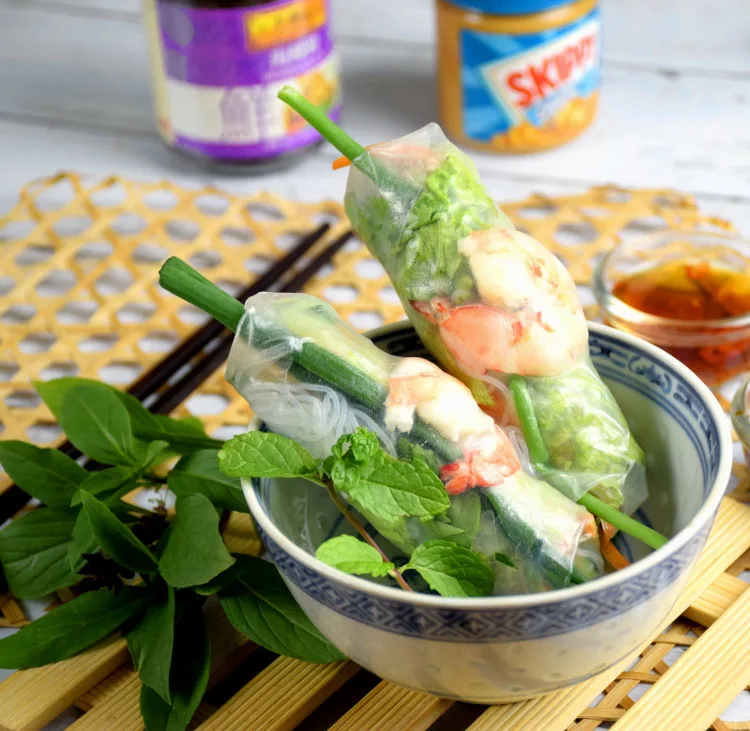
The components
The filling varies, but the guiding principle is to pack as many fresh vegetables as and to incorporate meat and shrimp to augment the flavor.
It should have proteins, crunchy vegetables, herbs, and noodles to give it as many contrasting flavors and textures as possible.
The protein (meat/shrimps)
Shrimps can be found in most of the Vietnamese rice rolls unless you are going for a vegetarian.
To prepare:
- Wash the shrimps, remove the head and tail, and devein.
- Place the shrimps in a shallow pan with some boiling water just sufficient to cover the shrimps.
- Add a teaspoon of salt to it. Place the shrimps in the pan over low to medium heat until it changes to pink and are no longer translucent.
- Remove and set aside.
- Use a sharp knife to split the shrimp into two along the body. Remove the shell.
You do not need to add any flavor to the shrimps. The seasoning is all from the dipping sauce. If you want, you can add a small amount of salt into the water and a stick of smashed lemongrass to infuse some flavor into the shrimps.
As for the meat, pork belly (or other cuts of pork with some fat) is the popular choice.
To prepare:
- Bring a pot of water to a boil. And a teaspoon of salt and a teaspoon of sugar.
- Submerge the pork into the boiling water. Reduce the heat until the water is barely boiling.
- The meat is cooked when it floats. Using a kitchen thermometer is the best way to check if it is fully cooked.. (Internal temperature of the pork should be at least 63°C/145°F)
- Drained and then cut it into thin slices.
- Keep the pork broth to cook the peanut butter dipping sauce later.
You can use other sources of protein apart from pork. Chicken meat is a suitable alternative. You can also omit the shrimp and meat and use tofu as the source of protein for the vegetarian version. Use the firm tofu and cut it into thin slices to replace the pork and shrimps.
The vegetables
Lettuce is the primary vegetable for the rice rolls, just like salad. The large piece of leaf holds other vegetables and herbs on it to minimize the smaller pieces from falling off to the edge of the rice paper that making wrapping difficult.
Other universal inclusions are carrot and cucumber. The crunchiness provides a big contrast with the sticky rice paper and squidgy vermicelli, rendering a satisfying mouthfeel for every bite.
You can cut them in julienne or thin slices. I prefer to cut it into matchsticks. The Japanese Mandolin makes this an easy task because I can slice the carrots and cucumber to any thickness. Stack up the slices and use a sharp knife to cut them in into fine julienne.
Another common add-on is bean sprouts. I did not include it in this recipe since there are filled with carrots and cucumbers, which already provide sufficient crunchiness to the rice paper rolls.
The herbs
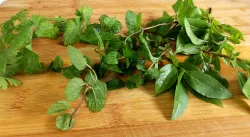
Various herbs provide the aroma lingering on your palate from your first bite. These are the typical Vietnamese herbs–basil, coriander, and mint.
Use any one of them or in combination. These are the common herbs used in Vietnamese cuisine. If you eat pho, you will be sure to have plenty of basil, mint, and coriander too. You can omit either one if you are not a fan of any of these.
Besides, scallion is a welcome addition. You can let the green section of the scallion protrude from both sides of the rice rolls as garnish.
The rice vermicelli
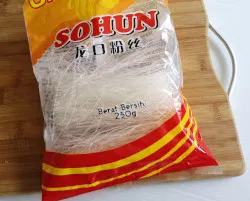
The inclusion of rice vermicelli qualifies the rice rolls as a complete meal- carbohydrates, proteins, fibers, and some fats from the peanut butter sauce.
You do not need to cook the rice vermicelli. All you need is to soak it in hot water (do not boil) for about five minutes. The rice vermicelli will start to turn soft, and al dented. The actual duration depends on the temperature of the water and the diameter of the rice vermicelli.
Test the doneness at a one-minute interval after the third minute. Once it is al dente, drain and place it in cold water to stop cooking. Drain again, and it is ready to use. The texture should be yielding but still chewy.
The rice papers (wrappers)
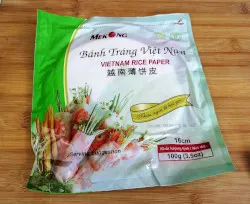
The rice paper is brittle and becomes sticky when it turns wet. Therefore, it is essential to keep it dry all the time.
Before you start to wrap the rice paper rolls, get ready a shallow plate of water to wet the rice papers.
There are various suggestions on how to soften the rice papers. This range from soaking with hot water to placing it on kitchen towels to remove the excess water. I find that the simplest way is to use cold water, as hot water tends to soften it too fast. It may become too soft and sticky if you are slow in arranging all the ingredients on the rice paper before wrapping it.
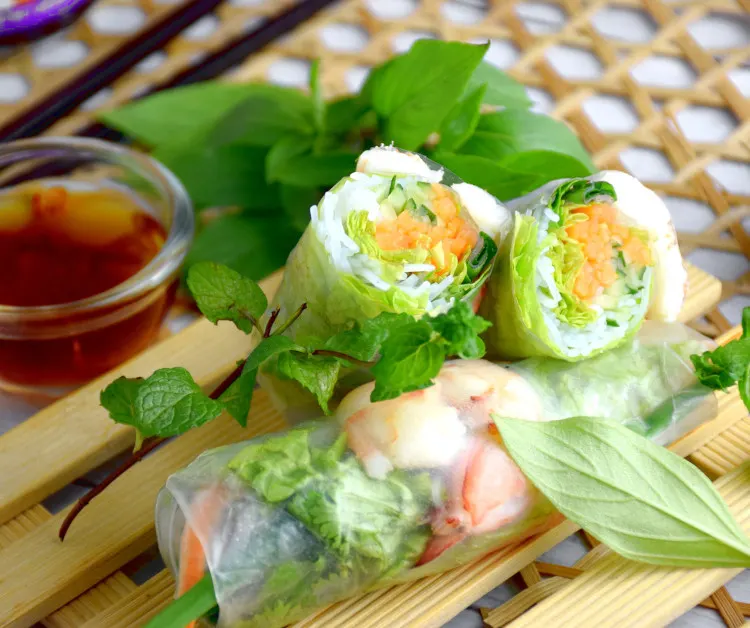
Wrapping the rice paper rolls
There is no hard and fast rule, but I would mention how I do it for your reference.
- Mise en place. Get all the ingredients ready because you must start to wrap within a minute after you wet the rice paper, or it will become too sticky and unmanageable.
- Submerge the rice paper fully into cold water for five seconds just before wrapping.
- Remove it and place it on a clean chopping board or tabletop. Dab the rice paper with a dry kitchen towel to remove the excessive water.
- Turn over the rice paper and dab dry the other side. Place it back on the dry chopping board.
- Choose a piece of lettuce with a length about 2/3 of the diameter of the rice paper. Place the carrot, cucumber, rice vermicelli, and herbs on the lettuce. Position the rice paper, slightly off-centered towards you, and leave it about one inch away from the side.
- Line the pork slices (if you use them) slightly further away from you, and the shrimps furthest away from you.
- Start by rolling up the rice paper so that all the vegetables are encased in it. You can wait for a while if the rice paper if the rice paper is not soft enough to fold. I will break if you force it through. Wait for half a minute until it becomes softer and pliable.
- Try to roll it tight by lightly squeezing it together, but not to break it. (This is the only ‘technical’ step in making the rice paper rolls. )
- Fold the two sides inwards like making an envelope. Then continue rolling away from you to wrap up the meat slices, and the shrimp.
It takes some practice to get it wrapped perfectly. Try to make it tight and compact to form a firm rice roll. A tighter roll looks excellent and showcases all the ingredients through the translucent rice paper.
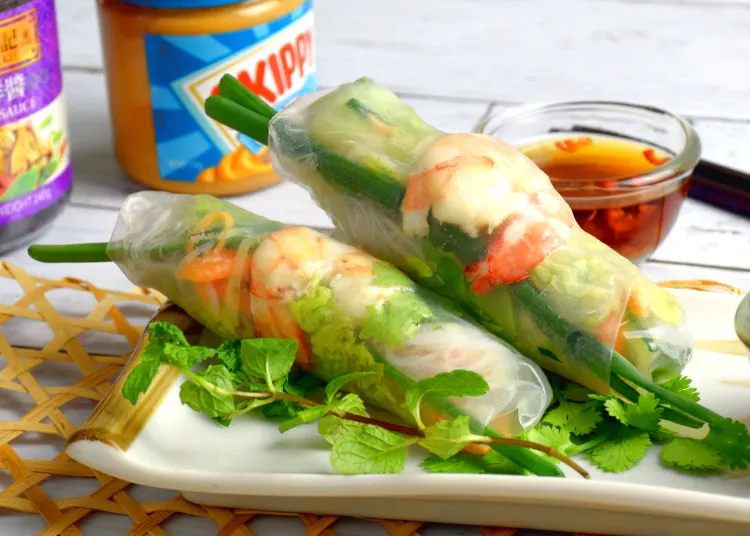
The dipping sauce
The rice paper rolls rely on the accompanying sauces to provide the flavor. There is no one standard of making the dipping sauce.
I have included two common dipping sauces in this recipe. One is the Nuoc Cham, which can be used in a variety of Vietnamese dishes. I use this sauce for the Vietnamese pork chops and the spring rolls. Check out these recipes as they are both delicious and easy to prepare.
The other one is the peanut sauce, which is a combination of peanut butter and Hoisin sauce. Note that some Vietnamese restaurants is making the sauce with a lighter color. You can achieve it by substituting the water in the recipe with milk.
They are both simple and delicious. Prepare it according to the quantity stated in the recipe if you are making it for the first time. Change the amount of each ingredient according to the sweetness, spiciness, and saltiness you prefer if you wish.
Make the Vietnamese rice paper rolls in advance
You need to keep the rolls from drying out. Arrange the rolls on a single layer and make sure they do not touch each other. The rice paper rolls will stick together once they touch each other which can be difficult to separate without damaging them.
Use the cling film to cover them and store them in the refrigerator. It should be good for half a day.
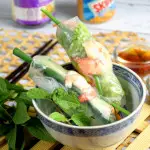
Vietnamese rice paper rolls
These rice paper rolls are packed with bright and fresh flavors. They are made with crunchy vegetables, squidgy noodles and herbs in the rice paper, and serve with the punchy peanut dipping sauce.
Ingredients
For the rice paper rolls
- 8 pieces rice paper
- 8 prawns, ,peeled, halved
- 60 g rice vermicelli, uncooked weight
- 4 sprigs mint leaves
- 4 sprigs coriander leaves
- 4 sprigs basil leaves, optional
- 2 stalks scallion
- 1 stick carrot, cut into matchsticks
- 1 cucumber, cut into matchsticks
- 1 lettuce
For the dipping sauce Nuoc Cham
- 2 tbsp sugar
- 1 1/2 tbsp lime juice
- 1 tbsp fish sauce
- 4 tbsp hot water
- 1 clove garlic, crushed
- 1 bird's eye chili, finely sliced
For the peanut sauce
- 1 tbsp vegetable oil
- 1 garlic clove, minced
- 1 1/2 tbsp peanut butter, preferably smooth
- 3 tbsp Hoisin Sauce
- 3 tbsp water, or milk for a lighter color
- red chili, minced to garnish
- peanuts, crushed to garnish
Instructions
For the rice paper rolls
- Clean the shrimps. Place the shrimp in a shallow pan with some boiling water just sufficient to cover the shrimps. Add a teaspoon of salt. Place the shrimps in the pan over low to medium heat to cook the shrimp until it changes to pink and no longer translucent. Remove the shell.
- Soak the rice vermicelli in hot water Once it is al dente, drain a place it in cold water to stop cooking. Drain, and it is ready to use.
- Submerge the rice paper fully into the water for five seconds just before wrapping. Remove and pat dry.
- Cut the carrots and cucumbers into matchsticks.
- Choose a piece of lettuce with the length about 2/3 of the diameter of the rice paper. Place the carrot, cucumber and rice vermicelli on it.
- Place the vegetable and the basil, coriander, and mint on the rice paper, slightly off-centered towards you, and leave about one inch clear from the side.
- Place the scallion horizontally towards the edge of the rice paper and the halved prawns on the other half of the rice paper away from you in the horizontal line.
- Fold the sides in over it, like closing an envelope. Then continue rolling away from you to wrap up the scallion, and the shrimps.
For the dipping sauce Nuoc Cham:
- Mix the water, sugar, lime juice, and fish sauce until the sugar dissolved.
- Add the minced garlic and finely chopped chili.
For the peanut sauce
- Saute the garlic with the vegetable oil.
- Add the remaining ingredients.
- Reduce the liquid to the desired thickness.
Notes
Nutritional value is for one rice paper roll
Recommended Products
As an Amazon Associate and member of other affiliate programs, I earn from qualifying purchases.
Nutrition Information:
Yield: 8 Serving Size: 8 rice paper rollAmount Per Serving: Calories: 291Total Fat: 13gSaturated Fat: 4gTrans Fat: 0gUnsaturated Fat: 7gCholesterol: 38mgSodium: 855mgCarbohydrates: 30gFiber: 2gSugar: 7gProtein: 14g
This data was provided and calculated by Nutritionix on 6/17/2019

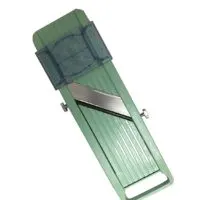
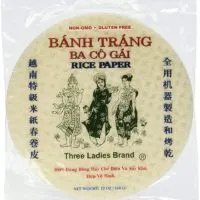

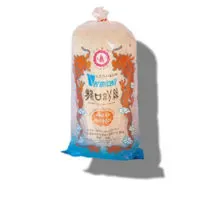
Calories in Vietnamese Rice Paper Rolls: A Delightful Delight
Tuesday 23rd of July 2024
[…] It is healthy as it sounds, as long as you omit the pork belly slices, (or skip the shrimps as well for a vegetarian treat). In this article, I Taste Of Asian Food […]
Here is a blog post title in English using the keyword noodles for rice paper rolls and following the requested guidelines: Noodles for Rice Paper Rolls: A Delicious Twist on a Classic Dish
Tuesday 9th of July 2024
[…] These rice paper rolls are packed with bright and fresh flavors. They are made with crunchy vegetables, squidgy noodles, and Taste Of Asian Food […]